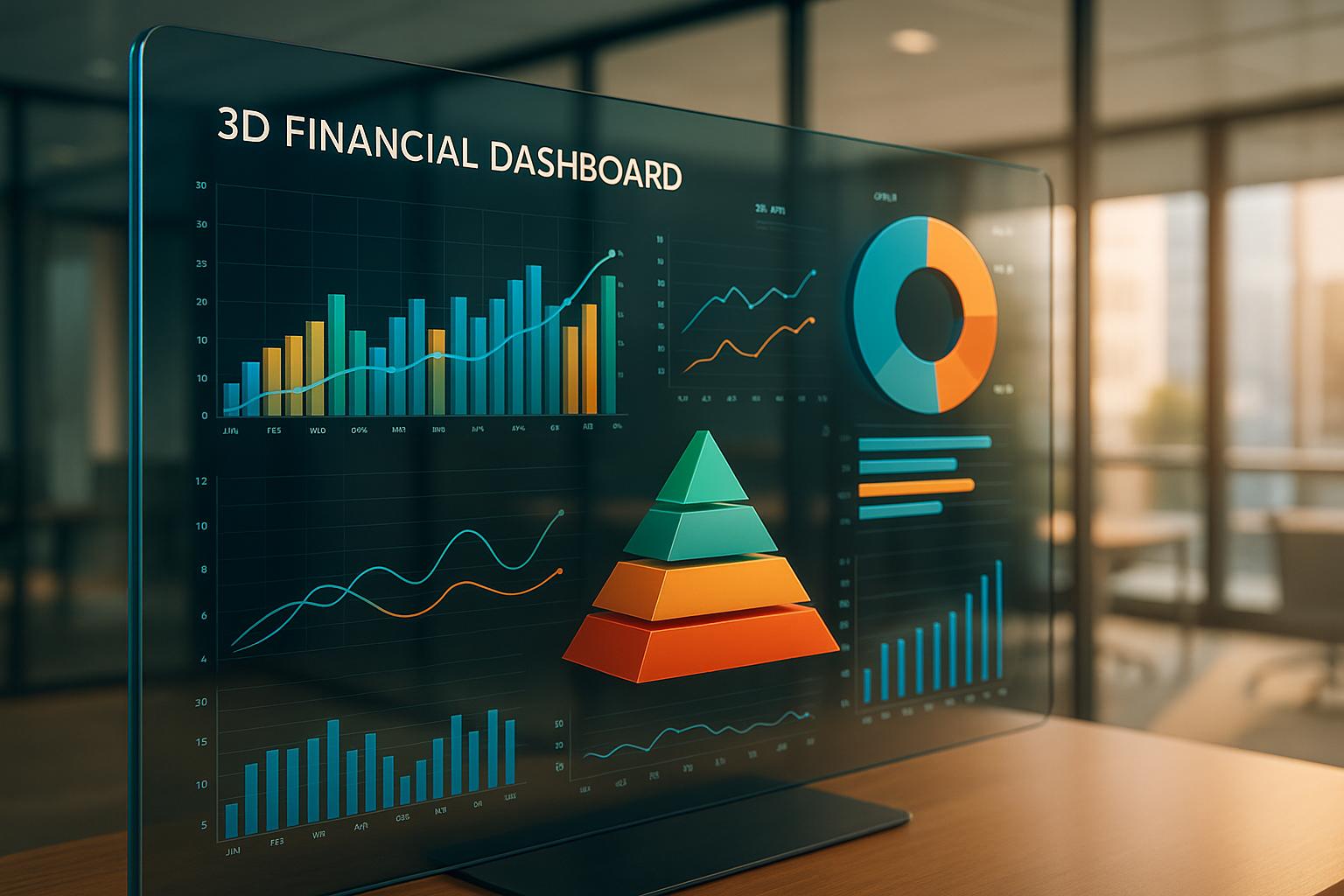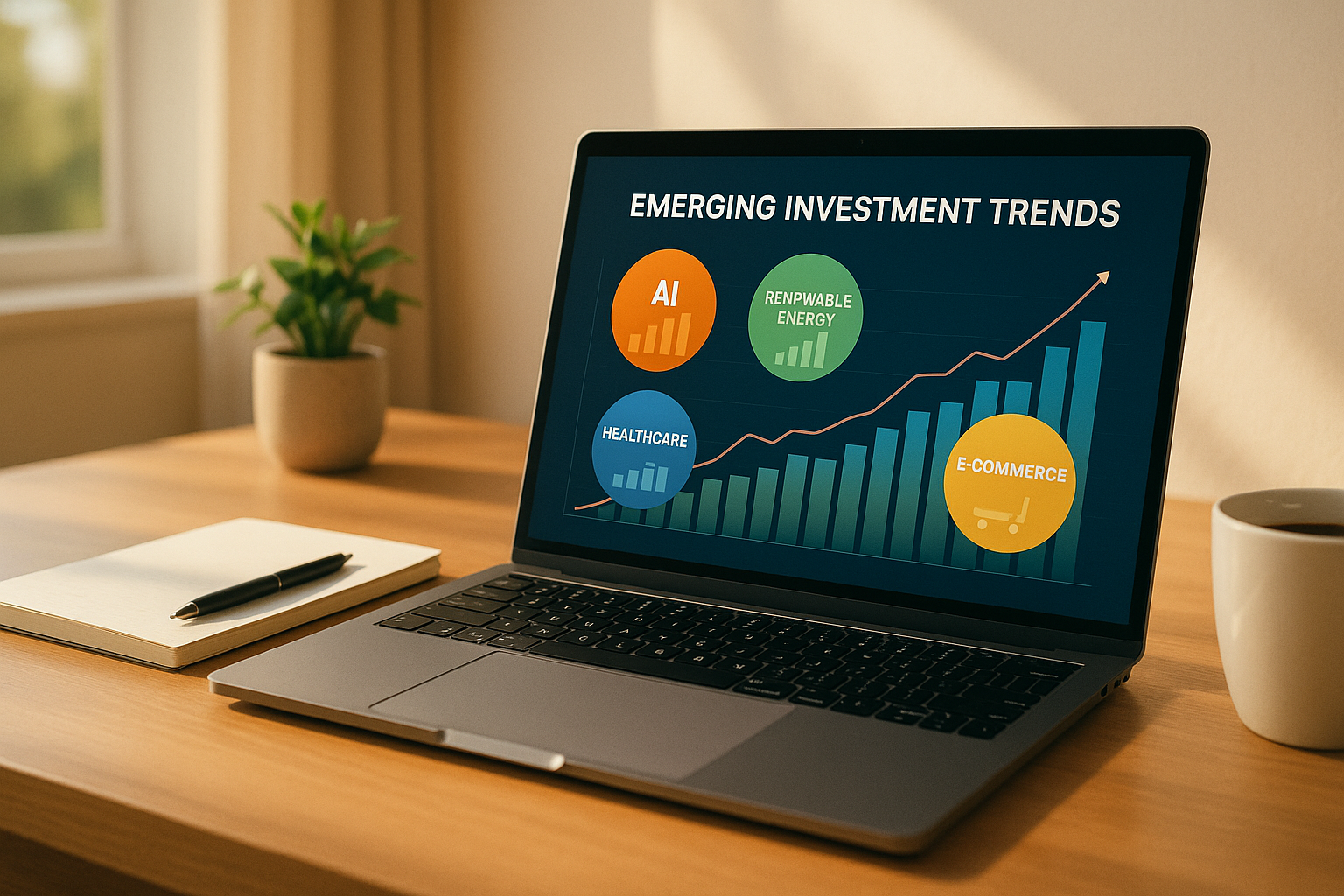Here’s a quick guide to the best real-time economic data tools that help you track market trends, analyze indicators, and act fast. These platforms now use AI and machine learning to deliver live insights and automated alerts, making them essential for navigating today’s fast-paced markets.
Key Features to Look For:
- Real-Time Updates: Get data refreshed every 15 minutes or less.
- Global Coverage: Access insights from international markets and industries.
- Custom Alerts: Stay ahead with notifications on key economic changes.
- API Integration: Seamlessly connect tools with your existing systems.
- Sector-Specific Metrics: Focus on industries that align with your strategy.
Top Tools for 2025:
- FRED API: Best for U.S. historical data and seamless integration.
- Moody's Analytics: Offers global forecasts and AI-powered insights.
- Trading Economics: Delivers near-instant updates and mobile alerts.
- OECD GDP Monitor: Tracks growth trends across industries.
- Gusto Small Business Monitor: Focuses on U.S. small business health.
Quick Comparison:
| Tool | Best For | Key Features | Limitations |
|---|---|---|---|
| FRED API | U.S. economic data | Historical archive, API integration | Limited global coverage |
| Moody's Analytics | Global forecasts | AI insights, credit risk updates | Higher subscription cost |
| Trading Economics | Global indicators | Mobile alerts, fast updates | Limited sector-specific metrics |
| OECD GDP Monitor | Industry trends | Real-time GDP data by sector | Focused on OECD countries |
| Gusto Small Business Monitor | U.S. small business trends | Hiring, payroll, and wage data | Limited to small business metrics |
How to Choose:
- Need frequent updates? Go for tools with real-time refresh rates.
- Focus on specific industries? Pick platforms with sector-specific insights.
- Want global data? Choose tools with broad market coverage.
Start small with basic subscriptions and upgrade as your needs grow. These tools are designed to help you act quickly, stay informed, and make better investment decisions.
Workshop: Building Real-Time RAG for Financial Data & News with Bytewax, Microsoft & Unstructured
How to Choose Economic Data Tools
Choosing the right economic data tool means focusing on features that can directly influence your investment decisions. These factors will help you evaluate and compare the platforms discussed later.
Data Speed and Refresh Rates
In fast-moving markets, having tools that update frequently is crucial. Look for platforms that:
- Process data in real time: This ensures you're working with the most up-to-date information.
- Offer frequent updates: Economic indicators should automatically refresh during trading hours, ideally every 15 minutes or less.
Once you've considered update speed, think about how the tool integrates into your daily workflow.
Platform Connections and Settings
A good economic data platform should seamlessly fit into your existing systems. Prioritize tools with:
| Feature | Why It Matters |
|---|---|
| API Integration | Automates data sharing between platforms, saving time and reducing manual work. |
| Alerts | Keeps you informed about key economic indicators without constant monitoring. |
These features help ensure you stay informed without disrupting your routine.
Market and Industry Coverage
A broad and detailed view of markets is essential for making informed investment decisions. Look for tools that provide:
- Global Market Data: Access to economic indicators from major international markets.
- Sector-Specific Metrics: In-depth data tailored to industries that align with your investment focus.
Make sure the platform covers the markets and sectors that are most relevant to your strategy. This alignment is key to getting the insights you need.
Leading Economic Data Tools in 2025
Economic data tools have come a long way, offering advanced features that make real-time market analysis more accessible and efficient. Here’s a closer look at some standout platforms shaping the landscape.
FRED API: Federal Reserve Economic Data
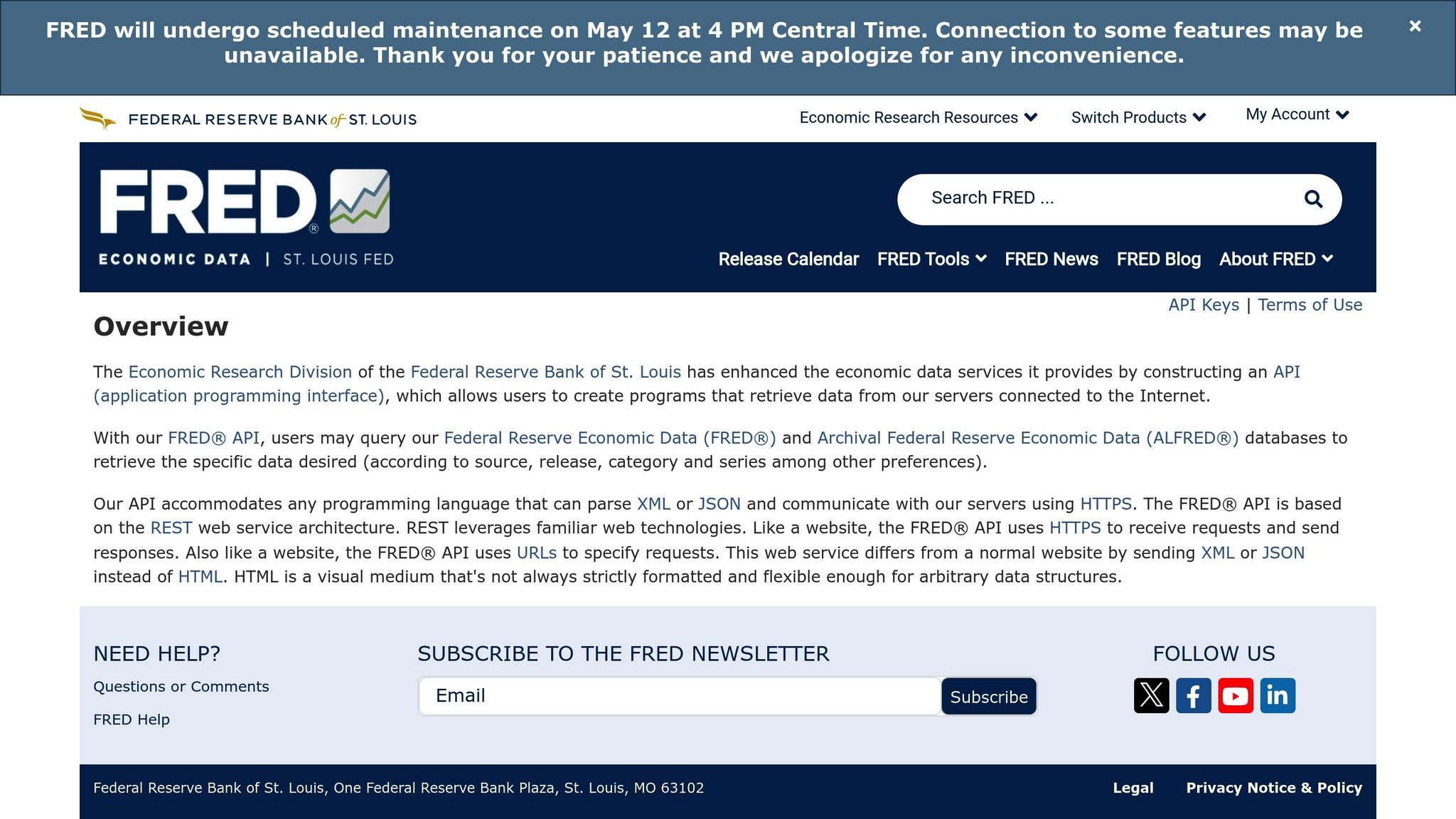
FRED remains a go-to resource for U.S. economic indicators. It’s particularly valued for its extensive historical data and integration capabilities. Here’s what it offers:
| Feature | Details |
|---|---|
| Data Coverage | Focused on U.S. economic time series |
| Historical Data | Decades of archived data for in-depth analysis |
| API Access | REST API for seamless integration with tools |
While FRED shines with its historical archive and reliability, its primary focus on U.S. data may limit its utility for those needing comprehensive global insights.
Moody's Economic Data & Analytics
Moody's platform caters to users needing global economic forecasts and advanced analytics. It’s packed with features designed for professionals who demand precision:
- Real-time forecasting models covering global economies
- Regular updates on credit risk and market conditions
- AI-driven insights with predictive analytics capabilities
- Custom alert systems to track changes in key indicators
Though Moody's offers a wealth of data and insights, its premium features come at a higher subscription cost, making it a better fit for organizations with larger budgets.
Trading Economics Dashboard
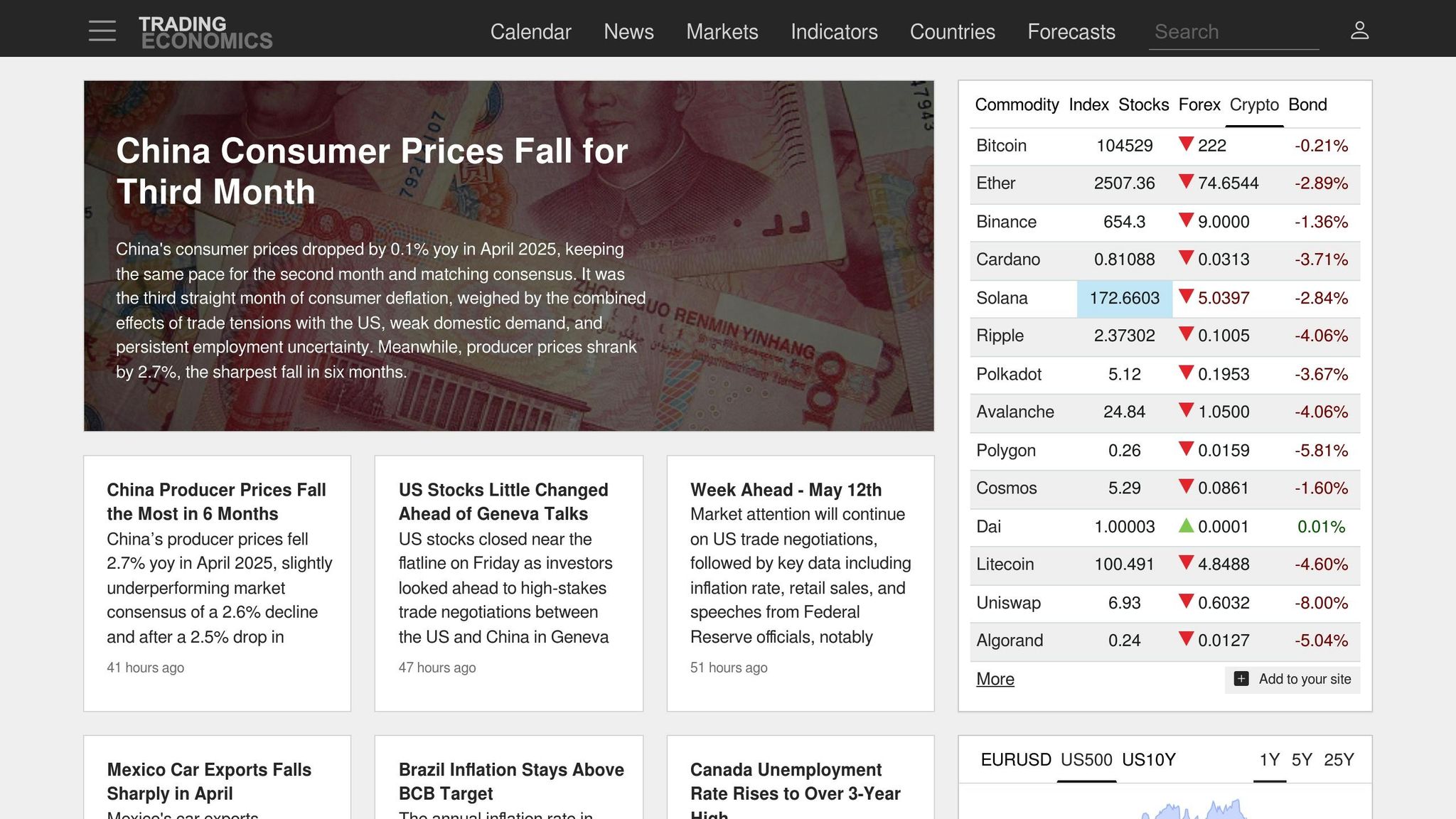
For those seeking quick access to global economic indicators, Trading Economics is a strong contender. Its key features include:
| Feature | Capability |
|---|---|
| Global Coverage | Tracks economic indicators across countries |
| Update Speed | Near-instantaneous data refresh |
| Mobile Integration | Real-time alerts delivered to mobile devices |
| Data Export | Options for exporting data for further analysis |
The platform’s mobile alerts make it particularly appealing to traders who need timely updates, ensuring they stay ahead in fast-moving markets. With its combination of speed and global reach, Trading Economics sets a high standard for real-time data tools.
sbb-itb-2e26d5a
Industry-Specific Data Tools
Sector-specific data tools offer a closer look at the unique dynamics within industries, often uncovering details that broader platforms might miss.
OECD GDP Monitor
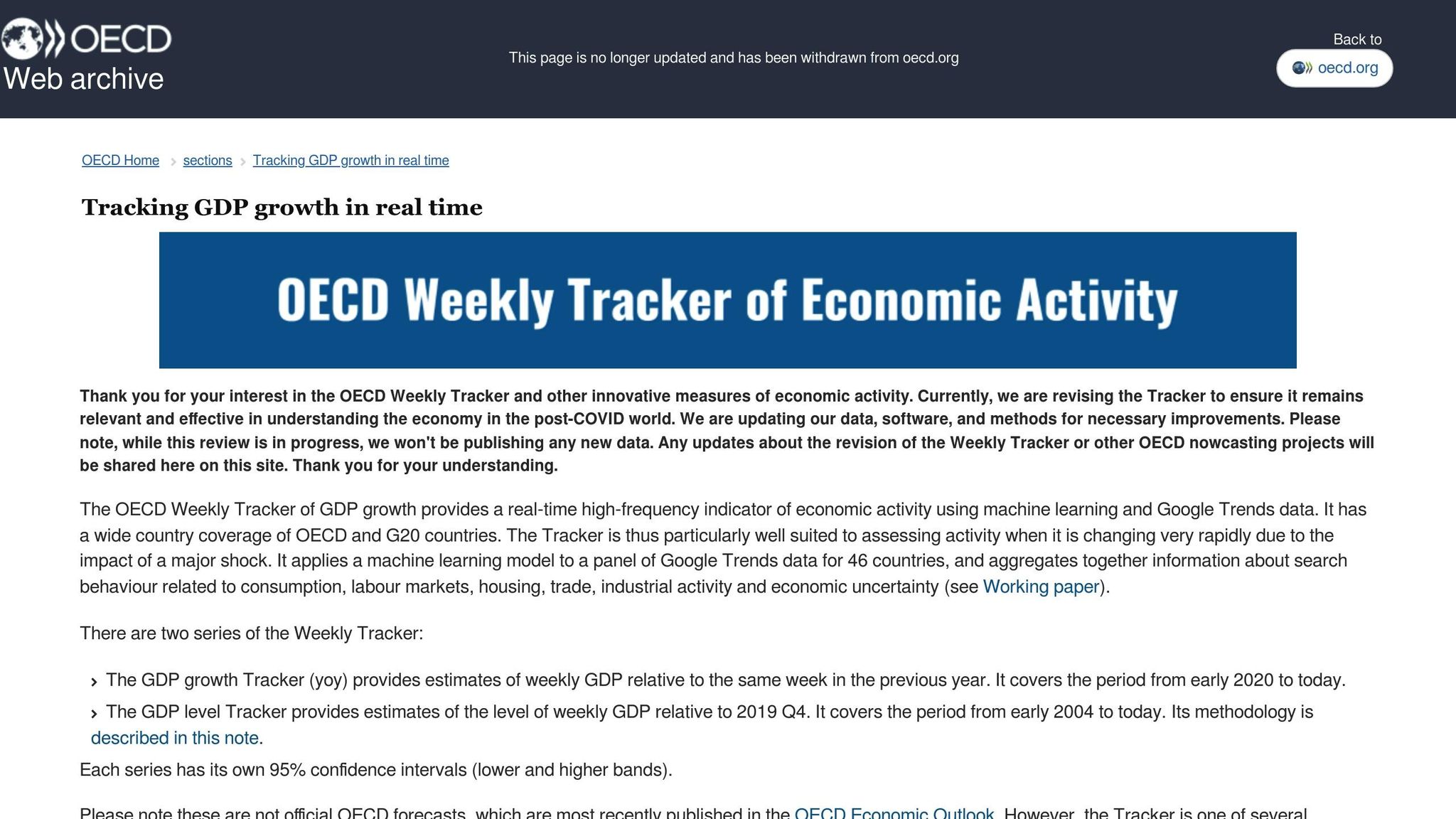
The OECD GDP Monitor is designed to track economic growth across various industries. By combining traditional economic indicators with real-time data, this tool delivers frequent updates on economic estimates for OECD member countries. It also breaks down the data by industry, spotlighting emerging trends in key sectors.
Gusto Small Business Monitor
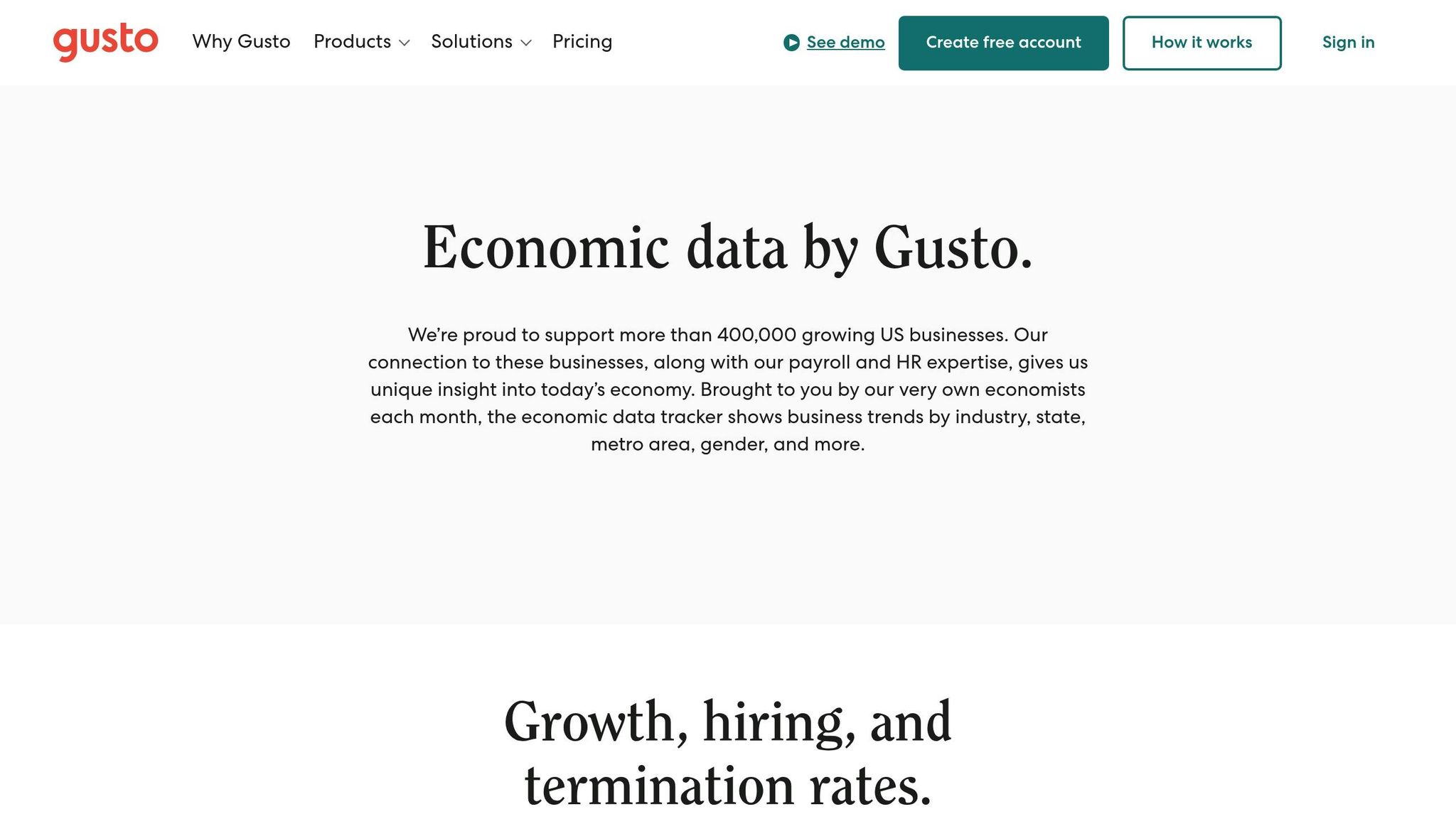
The Gusto Small Business Monitor caters specifically to small business analysis. It examines payroll and employment data to identify local workforce trends. Metrics like hiring rates and wages provide a snapshot of small business health, which often serves as an early indicator of larger economic changes.
These specialized tools add depth to the broader market analysis tools mentioned earlier, offering precise insights that are crucial for navigating today’s fast-changing economic environment.
Best Investing Tools Directory Features
The Best Investing Tools Directory simplifies the process of choosing real-time economic data platforms by offering a well-organized list of investing tools paired with straightforward reviews. It's crafted to support both individual and institutional investors in making smarter, more informed decisions.
You can filter options based on key factors like functionality, update frequency, and pricing. Each tool profile includes a concise breakdown of its features - such as real-time tracking or market analysis - so you can see exactly how it aligns with your needs.
With side-by-side feature comparisons and user reviews, the directory provides practical insights to help you evaluate each tool’s strengths and weaknesses. This detailed information makes it easier to find the right balance between cost and features for your investing goals.
Making Your Final Choice
Choosing the right economic data tool means balancing your specific needs with the features and costs available. This section pulls together the key points from earlier to help guide your decision-making process.
Summary of Main Points
When deciding on an economic data tool, focus on three essential factors that can influence your investment workflow:
Data Speed Requirements
Consider how often you need data updates. If you're an active trader, tools offering near-real-time refresh rates are crucial. On the other hand, long-term investors might only need data that's updated at regular intervals, which is sufficient for broader market analysis.
Integration Capabilities
Think about how well the tool fits into your current setup. Many tools are designed to work seamlessly with popular trading systems, catering to both institutional setups and individual investors. Double-check that the tool you're considering is compatible with your existing systems.
Coverage Alignment
Ensure the tool’s market and industry coverage aligns with your investment focus. For example, the Gusto Small Business Monitor provides detailed insights into U.S. small businesses, while other platforms may offer international market data for those focusing on global investments.
Price vs. Features Guide
Match the tool's features to your investment style and strategy:
- Day traders will benefit from real-time data updates and advanced API access.
- Swing and long-term investors may prioritize tools with daily updates and key technical indicators.
- Start small. Opt for a basic subscription to test the waters, and upgrade as your needs grow. Many platforms offer discounts for committing to longer subscription terms.
Tailor your choice to your goals and adjust as your investment approach evolves.
FAQs
How do AI and machine learning improve real-time economic data tools?
AI and machine learning are transforming real-time economic data tools by making them faster, smarter, and more precise. These technologies can analyze massive datasets in real time, uncovering trends, patterns, and outliers that would take humans much longer to identify. This means users can base their decisions on the most current and reliable information available.
What’s more, AI-driven tools offer personalized data visualization and forecasting, delivering insights tailored to specific user needs. As market conditions shift, machine learning algorithms adapt and refine themselves, ensuring the tools stay relevant and effective. Thanks to these advancements, real-time economic data tools have become essential for both individual investors and large institutions.
What should I consider when choosing tools with varying market and industry coverage?
When choosing tools that cater to various markets and industries, it's crucial to align them with your specific investment priorities. Start by looking at the geographic regions and industries the tool focuses on. For instance, if your interest lies in U.S. equities, opt for a platform that offers comprehensive insights into domestic markets and sectors.
Next, assess the quality and depth of the data the tool provides. Features like real-time updates, historical data analysis, and customizable reporting options can help you make better-informed decisions. Finally, prioritize ease of use. Tools with intuitive dashboards and seamless integration with other investment platforms can simplify your workflow and save valuable time.
What are some affordable real-time economic data tools for beginners on a budget?
For those just starting out and seeking budget-friendly tools for real-time economic data, there are plenty of options that won't strain your wallet. Many platforms offer free or low-cost access to key economic indicators like GDP, inflation rates, and employment statistics - perfect for beginners looking to build their knowledge.
Government websites are an excellent starting point. For example, the U.S. Bureau of Economic Analysis (BEA) and Federal Reserve Economic Data (FRED) provide a treasure trove of free, trustworthy economic data. These platforms are not only reliable but also user-friendly, making them ideal for newcomers.
If you're open to paid tools, some platforms offer basic subscription plans at affordable rates. These often include real-time updates and insights, giving you a more comprehensive view without requiring a big investment.
Want to explore even more options? Check out the Best Investing Tools Directory. It features detailed reviews and recommendations for tools suited to both beginners and seasoned investors, helping you find the perfect match for your needs and budget.

